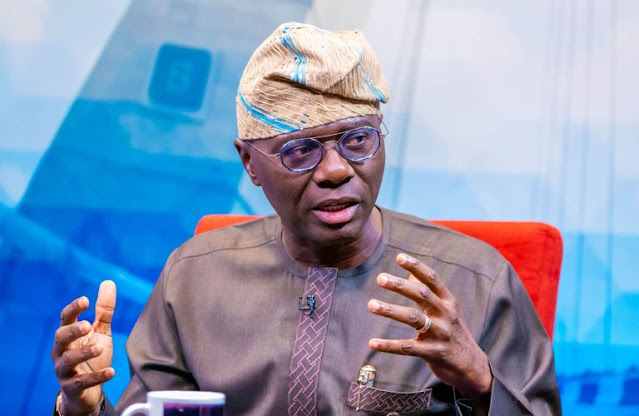In a stark revelation that underscores the monumental challenges facing Nigeria’s economic trajectory, a comprehensive report by Afrinvest Securities Limited has calculated that the country would need an unprecedented annual Gross Domestic Product (GDP) growth rate of 21.9% to reach a $1 trillion economy by 2031. This ambitious target, often touted as a national aspiration by policymakers and economic leaders, demands not just incremental improvements but transformative, radical reforms across multiple sectors. Released amid ongoing economic headwinds including inflation, currency depreciation, and fiscal constraints, the report serves as both a wake-up call and a roadmap for Nigeria to unlock its potential as Africa’s largest economy. As of September 11, 2025, with Nigeria’s current GDP hovering around $477 billion, the path to a trillion-dollar milestone in just six years appears daunting, yet the Afrinvest analysis emphasizes that it is achievable with bold, coordinated actions.
The Genesis of the $1 Trillion Economy Ambition
Nigeria’s pursuit of a $1 trillion economy is not a new concept; it has been a recurring theme in national development agendas for over a decade. The ambition gained prominence during the administration of former President Muhammadu Buhari, who in 2019 set a goal for Nigeria to join the league of trillion-dollar economies by 2030. This vision was echoed by President Bola Tinubu upon assuming office in 2023, who reiterated the target and even advanced it slightly to 2030 in some policy statements. The rationale behind this goal is multifaceted: it symbolizes economic maturity, enhances global competitiveness, and positions Nigeria as a powerhouse capable of driving Africa’s growth story. Achieving this would elevate Nigeria’s status from a middle-income economy to an upper-middle-income one, potentially lifting millions out of poverty and fostering sustainable development.
However, the Afrinvest report, titled “The Trillion Dollar Question: Pathways to Nigeria’s Economic Transformation,” delves deeper into the quantitative realities. Based on current economic indicators, including a nominal GDP of approximately $477 billion in 2024 (as per World Bank estimates adjusted for recent data), the report employs sophisticated econometric modeling to project the required growth trajectory. To bridge the gap from $477 billion to $1 trillion by 2031, Nigeria must compound its GDP at an average annual rate of 21.9%. This figure is derived from the compound annual growth rate (CAGR) formula: CAGR = (Ending Value / Beginning Value)^(1/n) – 1, where n is the number of years (7, from end of 2024 to 2031). Plugging in the numbers: (1,000 / 477)^(1/7) – 1 ≈ 21.9%. For context, Nigeria’s historical GDP growth has averaged around 3-4% annually over the past decade, with peaks during oil booms but slumps during recessions like the one in 2016 and the COVID-19-induced contraction in 2020.
The report’s authors at Afrinvest, a leading Nigerian investment banking and asset management firm founded in 1995, stress that this 21.9% growth rate is not merely aspirational but a mathematical imperative. Afrinvest, known for its annual Nigeria Economic Outlook reports and advisory services to governments and corporations, brings credibility to the analysis through its track record of influencing policy. The firm’s CEO, Ayodele Omediran, highlighted in the report’s foreword that “Nigeria stands at a crossroads; the trillion-dollar economy is within reach, but only if we confront the structural bottlenecks head-on.” This sentiment resonates with the broader economic discourse in Nigeria, where youth unemployment exceeds 40%, and the naira has depreciated by over 70% against the dollar since 2023.
Current Economic Landscape: Challenges Impeding Growth
To appreciate the magnitude of the 21.9% growth requirement, one must first examine Nigeria’s current economic position. As Africa’s most populous nation with over 220 million people, Nigeria boasts immense human and natural resources, including vast oil reserves, arable land, and a burgeoning tech ecosystem. Yet, structural issues have consistently hampered progress. The economy remains heavily reliant on oil, which accounts for about 90% of export earnings and 60% of government revenue, making it vulnerable to global price fluctuations. In 2024, Brent crude prices averaged around $80 per barrel, but geopolitical tensions in the Middle East and shifts toward renewable energy pose long-term risks.
Inflation has been a persistent scourge, reaching 34.2% in mid-2024 according to the National Bureau of Statistics (NBS), driven by food shortages, fuel subsidy removals, and supply chain disruptions. The naira’s volatility—trading at over ₦1,600 to the dollar as of September 2025—has eroded purchasing power and deterred foreign investment. Foreign Direct Investment (FDI) inflows, which peaked at $8.9 billion in 2011, have dwindled to under $3 billion annually in recent years, per United Nations Conference on Trade and Development (UNCTAD) data. Moreover, Nigeria’s debt-to-GDP ratio stands at approximately 40%, with servicing costs consuming a significant portion of the federal budget—over 90% in some quarters—limiting fiscal space for investments in infrastructure and social services.
The report identifies key bottlenecks: inadequate infrastructure, with only 40% of the population having access to reliable electricity; a weak manufacturing sector contributing just 9% to GDP; and regulatory hurdles that stifle entrepreneurship. Corruption, ranked 145th out of 180 countries in Transparency International’s 2024 Corruption Perceptions Index, further exacerbates these issues. In this context, achieving 21.9% growth requires not just recovery but hyper-acceleration, akin to the “Asian Tiger” economies of the 1980s and 1990s, which grew at double-digit rates through export-led industrialization and human capital development.
Sectoral Reforms: The Pillars of Transformation
Afrinvest’s report outlines a multi-pronged strategy to attain the required growth, emphasizing reforms in six critical sectors: agriculture, manufacturing, digital economy, solid minerals, energy, and services. These recommendations are grounded in Nigeria’s Economic Recovery and Growth Plan (ERGP) and the African Continental Free Trade Area (AfCFTA) framework, which could expand market access to 1.3 billion consumers.
Agriculture: From Subsistence to Commercial Powerhouse
Agriculture employs 70% of Nigerians but contributes only 22% to GDP due to low productivity, outdated farming techniques, and post-harvest losses exceeding 40%. The report proposes a 15-20% annual growth target for the sector through mechanization, irrigation expansion (covering just 1% of arable land currently), and value chain integration. Investments in agro-processing could add $100 billion to GDP by 2031, per estimates from the African Development Bank (AfDB). For instance, scaling up rice production—Nigeria imports $3 billion worth annually despite being the world’s largest producer of some staples—could reduce import dependency and boost exports. Public-private partnerships (PPPs) with firms like Olam Agri and Dangote Farms are recommended, alongside subsidies for fertilizers and seeds, potentially mirroring Ethiopia’s success in wheat self-sufficiency.
Manufacturing: Industrialization for Job Creation
Nigeria’s manufacturing sector, stagnant at 9% of GDP, needs to expand to 20% to drive the trillion-dollar goal. The report calls for tariff reductions under AfCFTA, improved power supply (targeting 10,000 MW from the current 4,000 MW effective capacity), and special economic zones (SEZs). Historical precedents like China’s manufacturing boom, which propelled it to a $17 trillion economy, offer lessons. Afrinvest suggests incentives for backward integration in petrochemicals and automobiles, potentially creating 5 million jobs. Challenges like smuggling and poor logistics—Nigeria ranks 92nd in the World Bank’s Logistics Performance Index—must be addressed through digital tracking systems.
Digital Economy: Leveraging Technology for Leapfrogging
With internet penetration at 55% and a vibrant fintech scene (e.g., Paystack and Flutterwave), the digital sector could grow at 25% annually. The report highlights the need for broadband expansion to 80% coverage, data protection laws, and startup funding via the Nigerian Sovereign Investment Authority (NSIA). Nigeria’s tech ecosystem, valued at $5 billion in 2024, could mirror India’s $200 billion IT industry by focusing on e-commerce, AI, and blockchain. Reforms include easing forex restrictions for tech imports and establishing innovation hubs in all 36 states.
Solid Minerals: Unlocking Non-Oil Wealth
Nigeria’s untapped mineral resources—gold, lithium, and bitumen worth $700 billion—represent a diversification opportunity. The report advocates for geological mapping, artisanal mining formalization, and value addition (e.g., refining lithium for batteries). Annual growth of 30% is feasible with policy stability, as seen in Botswana’s diamond-led growth. Environmental safeguards are crucial to avoid the “resource curse.”
Energy: Powering Sustainable Growth
Energy reforms are pivotal, with the report urging a shift from oil dependency to renewables. Doubling oil production to 2.5 million barrels per day (bpd) from 1.4 million, while investing $10 billion in solar and gas, could yield 15% sectoral growth. The Petroleum Industry Act (PIA) of 2021 provides a foundation, but implementation lags. Gas flaring reduction—currently 7% of global totals—could generate $2 billion annually.
Services: Enhancing Trade and Tourism
Services, at 50% of GDP, need bolstering through tourism promotion (targeting 10 million visitors yearly) and financial inclusion (banking penetration at 45%). The report recommends visa-on-arrival expansions and digital banking regulations.
Implementing these requires $500 billion in investments by 2031, sourced from domestic savings (currently 15% of GDP), diaspora remittances ($20 billion annually), and FDI. Fiscal discipline, including tax base widening to 15% of GDP from 6%, is essential.
Implications and Risks: A High-Stakes Gamble
The 21.9% growth trajectory carries profound implications. Success would reduce poverty from 40% to under 20%, per World Bank models, and position Nigeria as a G20 contender. However, risks abound: political instability, climate change impacts on agriculture, and global recessions could derail progress. The report warns of a “do-nothing” scenario where GDP stagnates at $600 billion by 2031, exacerbating inequality.
Macroeconomic stability is key, with inflation targets below 10% and forex reserves at $50 billion. The Central Bank of Nigeria’s (CBN) recent unification of exchange rates is a step forward, but sustained reforms are needed.
Stakeholder Perspectives and Global Comparisons
Stakeholders have varied reactions. The Nigerian Economic Summit Group (NESG) praises the report’s realism, while critics like the Trade Union Congress (TUC) argue it overlooks social costs. Internationally, countries like Vietnam achieved 20%+ growth through export-oriented policies; Nigeria could emulate this via AfCFTA.
Afrinvest’s analysis, drawing on data from NBS, IMF, and proprietary models, calls for a National Economic Transformation Council to oversee implementation.
Conclusion: Seizing the Moment for Prosperity
The Afrinvest report illuminates the arduous yet possible path to a $1 trillion economy by 2031, demanding 21.9% annual growth through sectoral reforms. As Nigeria navigates 2025’s challenges, this blueprint offers hope. With political will, private sector dynamism, and international partnerships, the dream can become reality, ushering in an era of shared prosperity for Africa’s giant.






